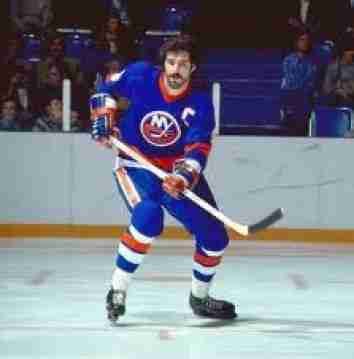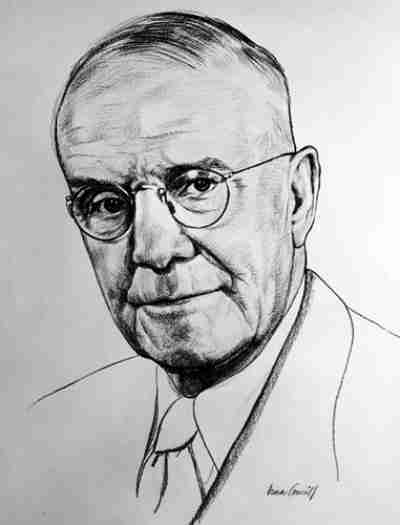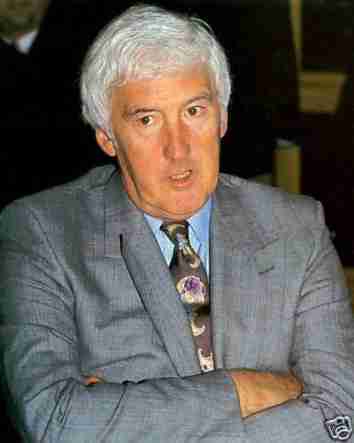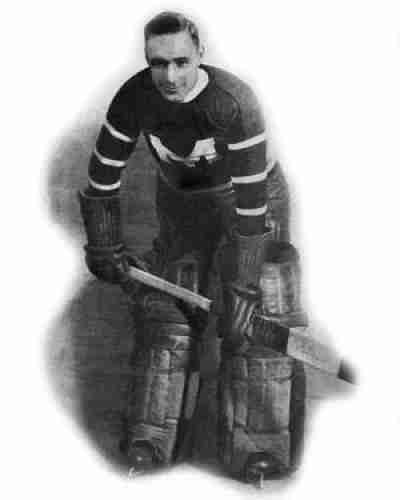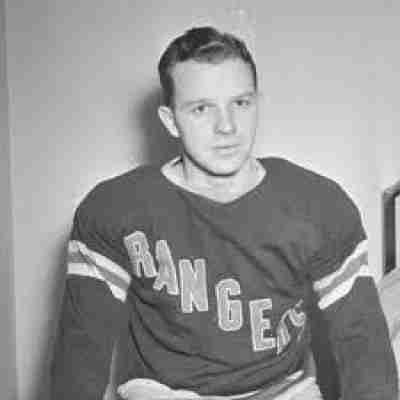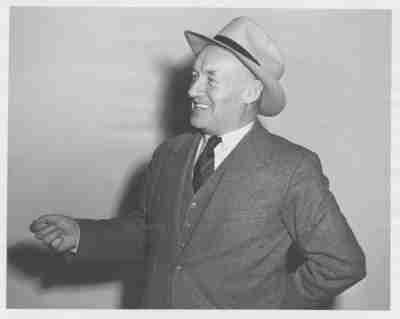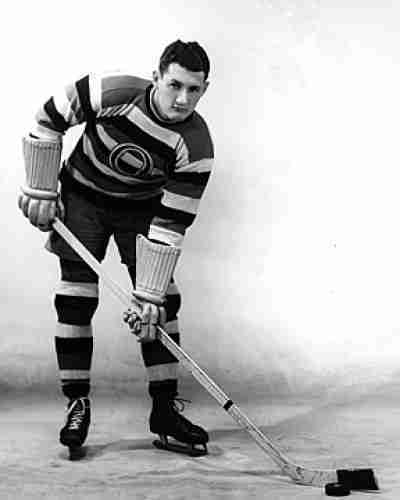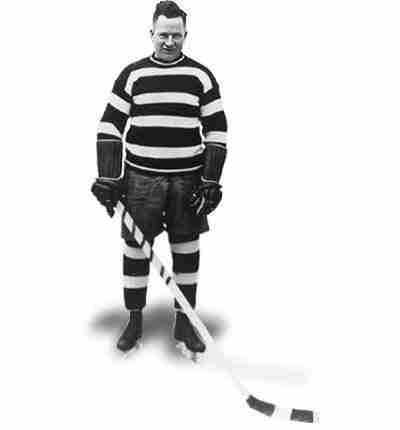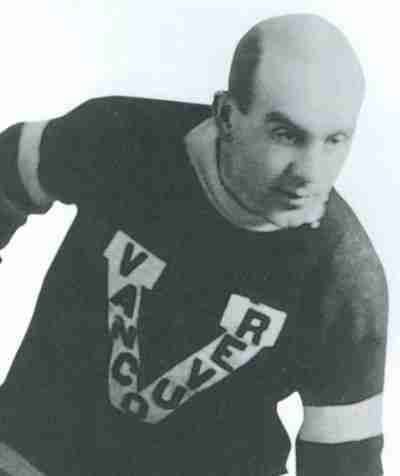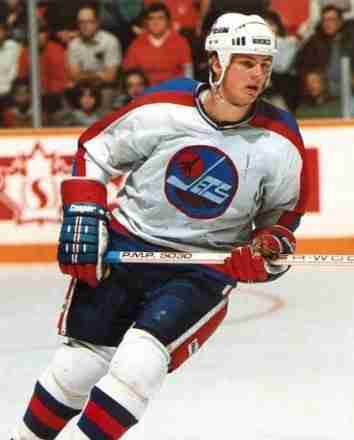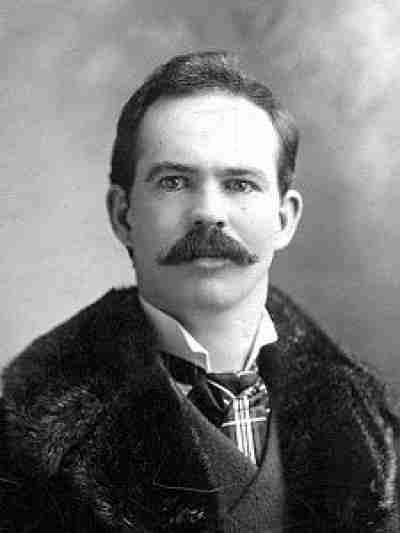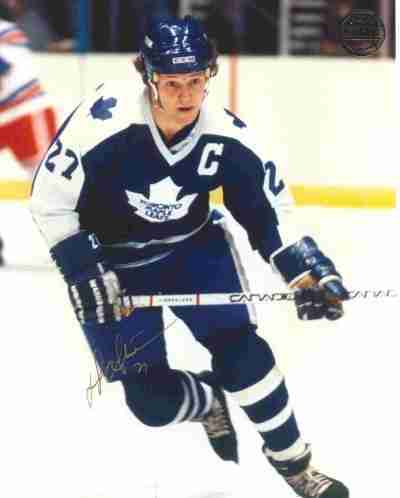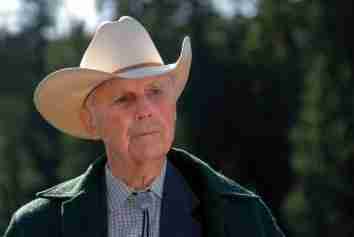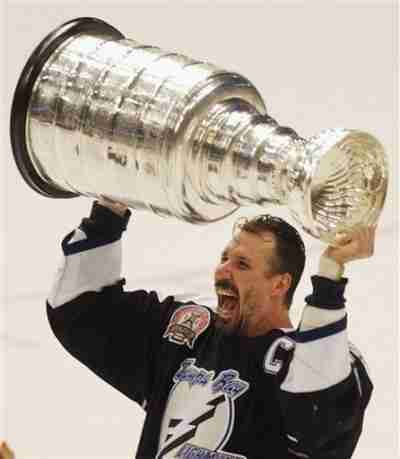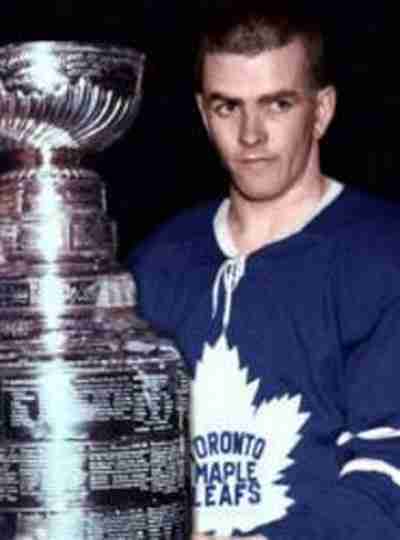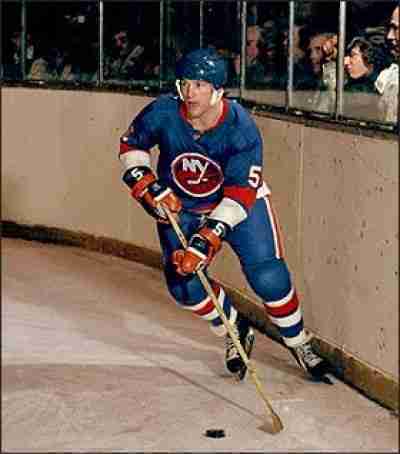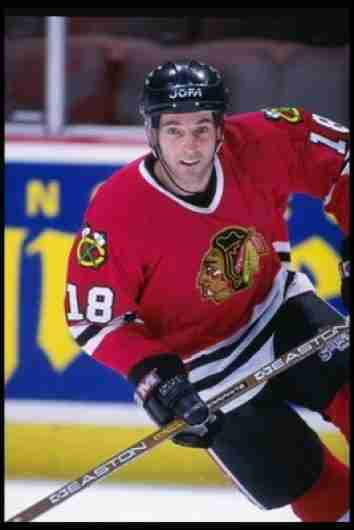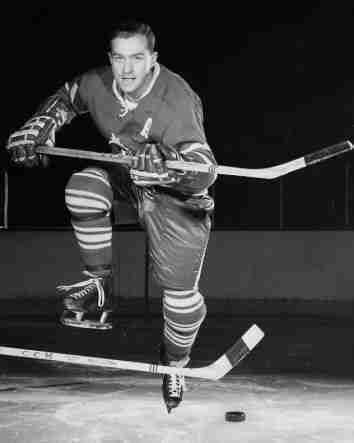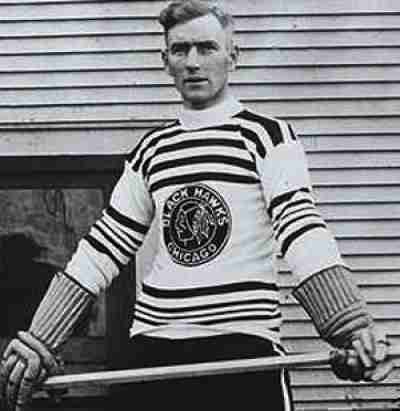We will openly question this Hall of Fame induction. Although we respect the career of Clark Gillies, his Hall resume looks a little weak. Granted he was a good part of four Stanley Cups with the New York Islanders, and he was on a star line with Mike Bossy and Bryan Trottier; however he was the third amigo on that line. Gillies was a decent scorer, and the rugged enforcer on the line, but at no time did he get 40 goals or 100 points in what was becoming an era where many players hit those levels.
A decent player in his youth, Claude Robinson’s induction to the Hockey Hall of Fame is essentially based on his groundwork of creating the Canadian Amateur Hockey Association. Robinson also coached the Canadian Team to Olympic Gold in 1932. Robinson was one of a long list of builders inducted in 1947, though it can be argued (and we will) that his induction may not equate to that of the other builders of that class.
Cliff Fletcher may have only won one Stanley Cup, but he brought a brilliant hockey mind to various clubs and brought them a lot closer to the dance than they would have had without him. Fletcher first arrived in the NHL with the St. Louis Blues as he worked his way from Scout to General Manager, and a lot of his work in the background helped the Blues become a contender and reach the Finals three times. Later, he took over the reins in Atlanta and helped to organize the move to Calgary, where they became a top team in the 1980’s, and he won his Stanley Cup in 1989.
The real answer to the trivia question of who was the first Goalie to wear a mask (he wore a leather mask for five games in the 1929-30 season), Clint Benedict was the man whose style caused the NHL to allow goaltenders to not have to remain standing. Benedict would often “accidentally” fall to his knees to stop a puck, so much so, that he was dubbed by rival fans in Toronto as “Praying Benny” due to the amount of time he was on his knees.
The fourth Veterans Category inductee is another that we are bit on the fence on. Clint Smith was a good player for the New York Rangers and helped them win the Stanley Cup in 1940. Smith was known for his playmaking and gentlemanly play winning the Lady Byng in 1939. Smith found his way to Chicago and was on a dream line with Bill Mosienko and Doug Bentley and led the NHL in assists in 1944 and won his second Lady Byng. Overall, Clint Smith had a very productive career, but we have to question whether it was a Hall of Fame one.
After building the New York Rangers and developing a core that would become the Stanley Cup Champions, Conn Smythe bought the Toronto St. Pats and renamed them the Maple Leafs. The franchise would see their greatest success under Smythe’s ownership and he also financed Maple Leaf Gardens. It is likely that fans of the Buds probably wished that Smythe would have developed an elixir for immortality and never ceased to be the owner of that team.
There is something about this induction that bothers us. Ralph “Cooney” Weiland shattered the single season points record that Howie Morenz set earlier, and simultaneously won the goals title in the 1929-30 season. This was the first NHL campaign where the forward pass was legal and Weiland along with linemates Dit Clapper and Dutch Gainor took advantage of the new rule with expert positioning.
Although Craig Patrick had a healthy playing career in the 1970’s, it was in the builder’s category that he entered the Hockey Hall of Fame. Patrick first became known for his behind the bench work as the Assistant Coach for the United States Miracle on Ice Team that won the 1980 Olympics. Patrick would later become the Director of Hockey Operations for the New York Rangers, and would also coach them for two separate stints; however it was his work in Pittsburgh that got him into the Hockey Hall of Fame.
Netting over twenty goals in seven National Hockey League seasons may not be the most impressive statistic, but in his era with the reduced games it certainly was! Cy Denneny was not just a goal scorer, but he was a certifiable winner. His name is engraved on the Stanley Cup four times, he was the NHL’s leading scorer once, and when he retired he was the leading points scorer in NHL history. The only curious question is why he had to wait for his induction, as he should have been inducted in an earlier class.
One of the early stars of organized hockey, Cyclone Taylor was a prolific scorer and a great two way player. He would lead his respective league in scoring on multiple occasions and would twice be part of Stanley Cup winning teams. As such, Taylor was rewarded with an early induction to the Hockey Hall of Fame in 1947.
We imagine that in the 1980’s that Dale Hawerchuk pretty much owned the Province of Manitoba in the 1980’s. Coming off a spectacular junior career, Hawerchuk was selected by the Winnipeg Jets and promptly won the Calder Trophy and set (since broken) the record for the youngest player to get 100 points. He would go on to hit that 100 point plateau five more times and hit 1,409 for his career. As he played in a small market and in an era with many other good Centres, he still made a mark in the NHL and entered the Hockey Hall of Fame in his second year of eligibility.
Considered one of the best all-around Canadian athletes in the turn of the century, Dan Bain excelled at everything he touched. Consider that he won the following:
The Manitoba Roller Skating Championship at age 13
The Manitoba Gymnastics Competition at age 17.
Three Manitoba Cycling Championships.
Canadian Trapshooting Champion in 1903
The Manitoba Roller Skating Championship at age 13
The Manitoba Gymnastics Competition at age 17.
Three Manitoba Cycling Championships.
Canadian Trapshooting Champion in 1903
Best known for a still standing NHL record of ten points in a game in 1976, Darryl Sittler was a lot more than just that dream performance. He was an accomplished offensive player who twice topped the 100 point mark while playing for the Toronto Maple Leafs and was the leader of that team through the 1970’s. He was a consistent scorer, but naturally became frustrated as Toronto management (namely Harold Ballard) began to dismantle the team. Sittler would join the Philadelphia Flyers where he was still a good player for another two seasons. He would finish his career with over 1,100 points and a revered place in Maple Leaf history.
Why does this seem like a duplicate induction? Daryl Seaman was one of the Calgary businessmen who helped to bring the Atlanta Flames to Calgary and was a part of the group that helped bring the Olympics (and the Saddledome) to Calgary. However, wasn’t the induction of Harley Hotchkiss sufficient already? Just saying.
If longevity and consistency is the key to the Hockey Hall of Fame, then sign up Dave Andreychuk to the Hall right now. Andreychuk is among career leaders in Games Played and Points Scored and in terms of scoring proficiency for a left winger, he has few peers. He excelled at the Power Play, where he maintains the career record for the most Power Play Goals of all time. The culmination of Andreychuk’s career was at the age of 40 he became the oldest player to ever make his Stanley Cup debut. Fortunately for him, he achieved the dream of any one who ever laced up the skates when he led the Tampa Bay Lightning to a Stanley Cup win.
One of the best players of all time for the Toronto Maple Leafs, Dave Keon was probably its classiest. The 1961 Calder Trophy winner brought an abundance of skill to the Leafs with his speed, deking ability and a diverse collection of shots. Keon was an expert penalty killer, and even more of an expert staying out of the penalty box himself as shown by his two Lady Byng Trophies (and the two equivalents he won in the WHA).
Contrary to what you might think, the first Defenceman to hit 1,000 points was not Bobby Orr. That accolade goes to Denis Potvin who was the anchor behind the New York Islanders success. Potvin was the first overall pick by the Isles, who were a struggling expansion team. He won the Calder Trophy, and was a two way superstar throughout his career. Potvin would become a three time Norris Trophy and five time First Team All Star in his career, but the pinnacle was the four consecutive Stanley Cups that the Islanders captured in the early 1980’s. The Hall of Fame ceremony had to be an extra special one for Potvin, as the ceremony was in Ottawa, where he grew up, and his Class included longtime teammate, Mike Bossy.
A brilliant playmaking Centre, Denis Savard was an over a point per game player throughout his career. He had his best efforts while playing with the Chicago Blackhawks in the 1980’s and would hit the 100 point mark on five occasions. The gifted forward would often find unique way to get the puck to his teammates, or put it in the net. Basically, this was a player made for the sports highlight reel. Savard would reach his pinnacle in his home province as he was able to raise the Stanley Cup as a member of the Montreal Canadians in 1993. The flashy French Canadian entered the Hockey Hall of Fame in his first year of eligibility.
Dick Duff was a very good player who was on six Stanley Cup winning rosters, but for a forward his overall points total was decent but perhaps not Hall of Fame worthy based on his era. However, his points per game increased in the post season, and he was a key contributor on many of those Cups, and not just a bystander. It is not a terrible induction, but it was not exactly a snub had Dick Duff never been included.
When most hockey fans hear the name of Dick Irvin, they usually think of the legendary broadcaster. However, it was his father (who bore the same name) who was the on ice star.


